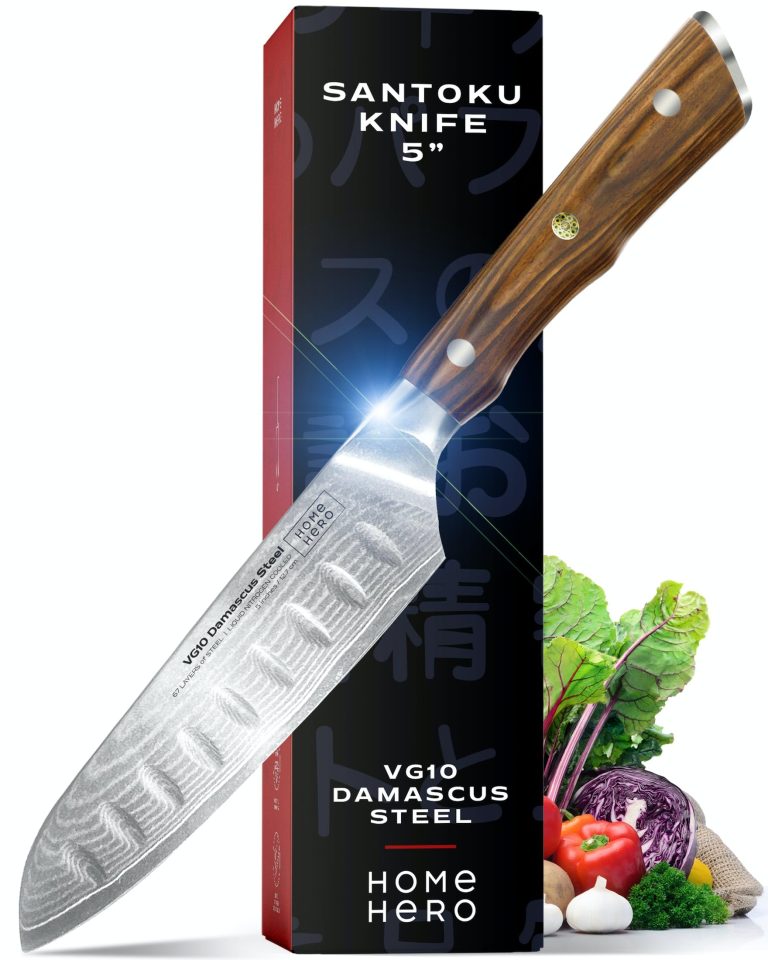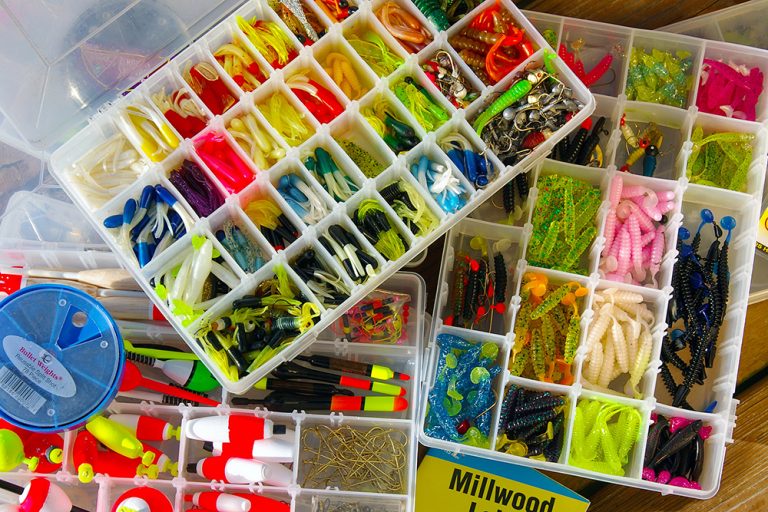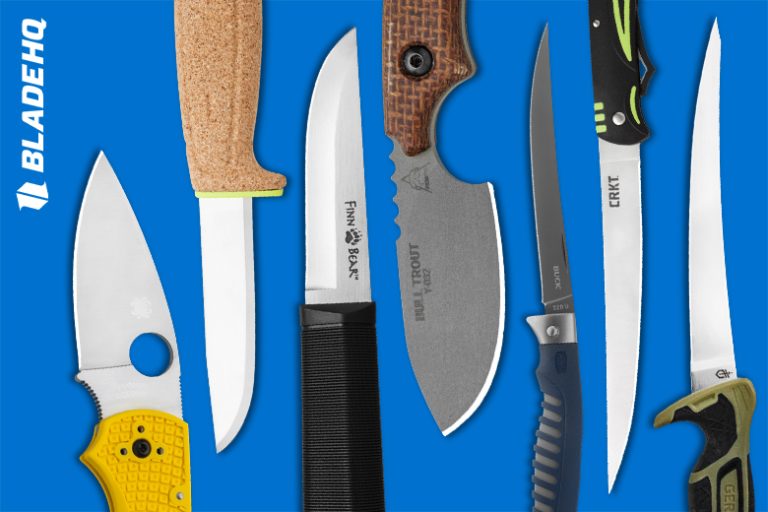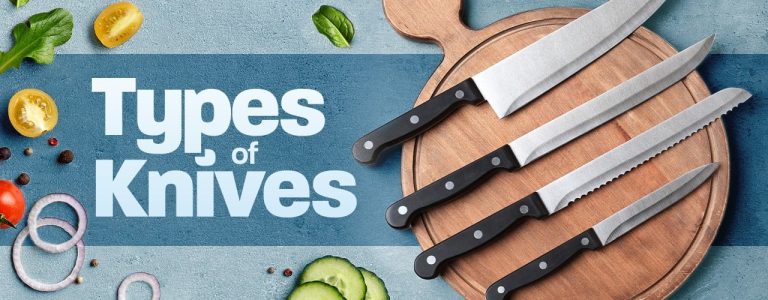The Art of Customizing Your Own Hunting Knife Handle
The art of customizing your own hunting knife handle allows you to personalize your knife and enhance its functionality. Customizing a hunting knife handle involves choosing the right materials based on durability, grip, and aesthetics, and then shaping, sanding, and finishing the handle to your desired specifications.
This process requires precision and attention to detail, as well as the use of tools such as saws, files, sandpaper, and epoxy. By customizing your hunting knife handle, you can create a unique and comfortable grip that suits your hand size and hunting style, improving your overall performance in the field.
Additionally, the process of customizing your knife handle can be a rewarding and creative experience, allowing you to express your individuality and craftsmanship.
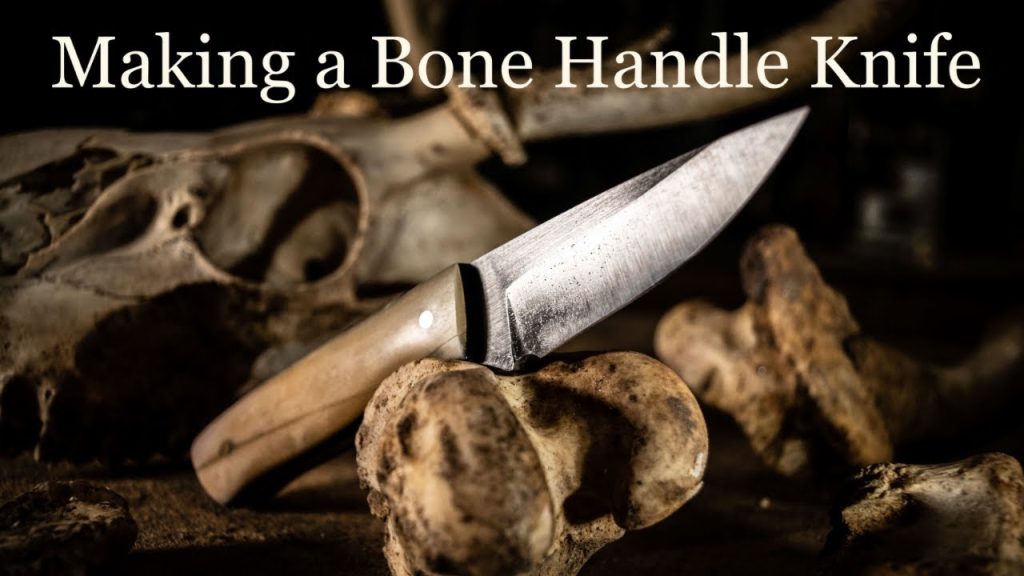
Why Customizing Your Hunting Knife Handle Matters
Customizing your hunting knife handle is an art that shouldn’t be overlooked. Enhancing your own handle design adds a personal touch to your hunting gear, making it unique and tailored to your needs and style.
Personalization And Uniqueness
- Customizing your hunting knife handle allows you to add a personal touch and make it uniquely yours.
- You can choose from a variety of materials, colors, and finishes to create a handle that reflects your individual style and preferences.
- Customization gives you the opportunity to stand out from the crowd and have a one-of-a-kind hunting knife that no one else possesses.
- By customizing your handle, you can also engrave or etch it with your name or any design that holds special meaning to you, adding a personal and sentimental value to your knife.
Enhanced Comfort And Grip
- One of the main reasons why customizing your hunting knife handle matters is the improved comfort and grip it provides.
- Customization allows you to choose a handle shape and size that fits your hand perfectly, ensuring a comfortable and ergonomic grip.
- Different handle materials such as wood, rubber, or textured synthetics can enhance the grip, providing better control and reducing the risk of slippage even in wet or slippery conditions.
- The ability to customize the handle’s contours and finger grips can minimize hand fatigue during long hunting trips, increasing overall comfort and allowing for a more enjoyable hunting experience.
Improved Performance And Functionality
- Customizing your hunting knife handle can significantly improve its performance and functionality.
- You can choose a handle material that balances durability, weight, and balance according to your specific needs.
- Customization allows you to optimize the weight distribution of the handle to achieve better balance and control, which is crucial for accurate and precise cuts.
- The ability to select a handle material that reduces vibration and absorbs shock can enhance the overall performance of the knife, especially during heavy use or intense hunting situations.
- By customizing your handle, you have the flexibility to add features such as lanyard holes, finger choils, or thumb ramps, further improving the knife’s functionality and versatility.
Customizing your hunting knife handle offers several advantages. It allows for personalization and uniqueness, ensuring your knife stands out and reflects your individual style. Customization also enhances comfort and grip, providing a handle that fits perfectly in your hand and minimizes hand fatigue.
Furthermore, it leads to improved performance and functionality, optimizing weight distribution and adding features that enhance overall knife performance. By customizing your hunting knife handle, you can create a tool that not only meets your specific needs but also enhances your hunting experience.
Selecting The Right Material For Your Knife Handle
Selecting the perfect material for your hunting knife handle enhances personalization and functionality. Pick from various options like wood, bone, or synthetic materials to create a customized grip that suits your style and needs.
Customizing your own hunting knife handle allows you to create a unique and personalized tool that reflects your individual style and preferences. When it comes to selecting the material for your knife handle, there are numerous options available to choose from.
Consider the following factors to ensure you make the right choice:
Numerous Options Available:
- Wood: Wood is a popular choice for knife handles due to its natural beauty and warm feel. Options like walnut, birch, and rosewood provide excellent durability and aesthetic appeal.
- Bone: Bone handles offer a traditional and rustic look, making them a favorite among hunters. Cow bone and stag antler are commonly used materials due to their strength and character.
- Micarta: This composite material is made by layering natural fibers, such as linen or canvas, with epoxy resin. Micarta handles are known for their exceptional durability and moisture resistance.
- G10: G10, a type of high-pressure fiberglass laminate, is lightweight, strong, and resistant to moisture and chemicals. It is available in a variety of colors and textures, making it a versatile choice for custom knife handles.
- Synthetic materials: Materials like rubber, nylon, and polymer offer excellent grip and are ideal for knives used in wet or extreme conditions. They are also easy to maintain and clean.
Factors To Consider When Choosing The Material:
Durability: The durability of the knife handle material is essential, as it determines the overall lifespan and performance of your knife. Consider the intended use and environment in which you’ll be using the knife to ensure you choose a material that can withstand the demands.
Aesthetics: Your knife handle should not only be functional but also visually appealing. Select a material that matches your personal style and enhances the overall look of the knife. Whether you prefer a sleek and modern design or a rustic and traditional look, there is a material for every taste.
Maintenance requirements: Different handle materials have varying levels of maintenance requirements. Some materials, such as wood, may require regular oiling to maintain their luster, while others like synthetic materials are relatively low maintenance and easy to clean. Consider how much effort you’re willing to put into maintaining your knife handle.
Ensuring you select the right material for your hunting knife handle is crucial for creating a tool that not only performs well but also showcases your personal style. Take the time to explore the numerous options available, considering factors such as durability, aesthetics, and maintenance requirements.
By customizing your own hunting knife handle, you can create a truly unique tool that will serve you well in the field.
Popular Knife Handle Materials For Customization
Customizing your own hunting knife handle is an art, and choosing the right material is crucial. Explore popular knife handle materials for customization to create a unique and personalized hunting tool.
Wood
Wood is one of the most popular materials for customizing hunting knife handles. It offers a timeless and natural look that can be tailored to your personal style. Different types of wood bring their own unique characteristics to the table, allowing you to choose the one that suits your preferences and needs.
- Oak: Known for its durability and density, oak is a popular choice for hunting knife handles. It is resistant to moisture and offers a pleasant grip.
- Walnut: Walnut wood boasts a rich and dark color, making it highly sought after for knife handle customization. Its straight grain pattern adds elegance to the final product.
- Zebrawood: Zebrawood is named after its stunning zebra-like patterns. It offers a distinctive look that is sure to make a statement.
- Rosewood: This reddish-brown hardwood is prized for its strength and beauty. Its natural oils give it water resistance, making it an excellent choice for outdoor use.
- Exotic woods: Other exotic woods like burl wood, olive wood, and cocobolo wood provide unique patterns and colors, adding a touch of sophistication to your custom knife handle.
Shaping and finishing wood handles requires precision and care. Here are some techniques to consider:
- Carving: Use carving tools to shape the wooden handle to your desired design. Take small, deliberate cuts and smooth out rough edges for a comfortable grip.
- Sanding: After carving, sand the handle to achieve a smooth finish. Start with a coarse grit sandpaper and gradually move to finer grits for a polished look.
- Staining: Apply wood stain to enhance the natural beauty of the wood. Choose a stain that complements the grain pattern and color of the wood.
Micarta
Micarta is a versatile material commonly used in knife handle customization. It is made by layering resin and fabric together, resulting in a durable and attractive handle option. Understanding the advantages and disadvantages of micarta can help you decide if it’s the right choice for your custom knife handle.
Advantages:
- Durability: Micarta handles offer excellent strength and resistance to wear and tear.
- Grip: The texture of micarta provides a secure and comfortable grip, even in wet or slippery conditions.
- Customization: Micarta can be easily customized with different colors and patterns, allowing for unique designs.
Disadvantages:
- Weight: Micarta handles can be heavier compared to other materials, which may affect the overall balance of the knife.
- Maintenance: Micarta handles require regular cleaning and oiling to maintain their appearance and durability.
To customize a micarta handle, consider the following steps:
- Shape: Use tools such as a bandsaw or files to shape the micarta into your desired handle design.
- Sanding: Smooth out any rough edges or imperfections using sandpaper of varying grits.
- Dyeing: If you want to add color to your micarta handle, consider using fabric dye or specialized micarta dyes to create unique patterns and designs.
- Polishing: Use a polishing compound or sandpaper with a high grit to achieve a glossy finish on the micarta handle.
G10
G10 is a popular synthetic material used for knife handle customization due to its durability and versatility. It is made by layering fiberglass cloth with epoxy resin and subjecting it to high pressure and heat. Here are some key features of G10 handles:
- Strength: G10 handles offer exceptional strength and resistance to impact, making them ideal for heavy-duty applications.
- Weather resistant: G10 handles are highly resistant to moisture, chemicals, and temperature changes, ensuring long-lasting performance.
- Lightweight: Despite their excellent strength, G10 handles are relatively lightweight, contributing to the overall balance of the knife.
Customizing G10 handles involves the following techniques:
- Carving: Use power tools or hand tools to carve the G10 handle into your desired shape, taking care to maintain proper ergonomics.
- Texturing: Create texture on the G10 handle for a better grip. Techniques such as stippling, checkering, or adding grooves can enhance the handle’s functionality.
- Contouring: Use files or sandpaper to contour the edges of the G10 handle, ensuring comfort and ergonomic fit in hand.
- Finishing: Polish the G10 handle using fine-grit sandpaper or a buffing wheel to achieve a smooth and polished finish.
By considering the characteristics and techniques associated with popular knife handle materials like wood, micarta, and G10, you can create a custom hunting knife that is not only functional but also a reflection of your personal style and preferences.
Tools And Techniques For Customizing Your Knife Handle
Discover the art of customizing your hunting knife handle with a range of tools and techniques. Elevate your knife with personalized designs and textures, creating a unique and personalized tool for your outdoor adventures.
Preparing a custom hunting knife handle requires the right tools and techniques to achieve the desired outcome. Whether you’re a seasoned craftsman or just starting out, understanding the essential tools and step-by-step techniques will help you create a personalized and functional handle.
Let’s explore each stage of the customization process to bring out the artisan in you.
Essential Tools For Customization:
To begin your knife handle customization journey, gather the following tools:
- Sandpaper (various grits): Sandpaper allows you to smooth and shape the handle.
- File and rasp set: These tools aid in removing material and creating contours.
- Dremel tool with various attachments: A Dremel tool is handy for intricate detailing and shaping.
- Vise or clamp: A vise or clamp ensures stability while working on the handle.
- Measuring tape or ruler: Accurate measurements are crucial for a properly fitted handle.
- Marking tools (pencil or marker): Use these to mark areas for shaping and texturing.
- Heat gun or boiling water pot: These aid in softening the handle material for shaping purposes.
- Protective equipment (safety goggles, gloves): Always prioritize safety while working with tools.
Step-By-Step Guide To Handle Customization:
Follow these steps to customize your knife handle effectively:
- Measuring and marking the handle:
- Measure the existing handle dimensions and determine the changes you wish to make.
- Mark the areas to be removed or reshaped, ensuring an ergonomic, comfortable grip.
- Shaping and contouring the handle:
- Begin by using a file or rasp to remove excess material from the handle.
- Gradually shape the handle, focusing on achieving the desired curves and angles.
- Use the Dremel tool with appropriate attachments for intricate detailing and precision.
- Adding textures and patterns:
- Experiment with different techniques to add grip and enhance the handle’s aesthetics.
- Employ methods like checkering, stippling, or carving to create texture.
- Take care to maintain balance between functionality and visual appeal.
- Finishing touches and sealants:
- Once satisfied with the handle shape and texture, sand it thoroughly to achieve a smooth finish.
- Consider applying a protective sealant or finish to enhance durability and safeguard against moisture.
- Allow ample drying time as recommended by the sealant manufacturer.
Remember, each customization process may vary based on the handle material, personal preferences, and skill level. Experimentation and practice will refine your technique, allowing you to create handles that embody both style and functionality. So, grab your tools, unleash your creativity, and transform your hunting knife handle into a true masterpiece.
Advanced Customization Techniques For Knife Handles
Discover the secrets of creating a personalized hunting knife handle with advanced customization techniques. Craft your own unique design to enhance both the functionality and aesthetic appeal of your favorite hunting tool. Unleash your creativity and make a statement with a truly customized knife handle.
Customizing your own hunting knife handle is an art that allows you to create a personalized masterpiece that reflects your style and preferences. While basic customization techniques are a great starting point, taking it to the next level requires advanced techniques that can truly elevate your knife handle to a work of art.
Here are some advanced customization techniques to consider:
Adding Decorative Elements:
- Engraving intricate patterns: Add a touch of elegance by engraving decorative patterns onto the handle. This can be done using specialized engraving tools to create beautiful designs that complement the overall aesthetic.
- Sculpting ornate shapes: Take customization to new heights by sculpting elaborate shapes onto the handle. Whether it’s a detailed animal motif or a unique symbol, sculpting allows you to bring your imagination to life.
Inlaying Materials:
- Using exotic wood or bone: Enhance the visual appeal of your knife handle by inlaying materials such as exotic wood or bone. This technique adds texture and depth, giving your handle a luxurious and unique look.
- Incorporating precious metals: Elevate your handle even further by inlaying precious metals like gold or silver. This technique adds a touch of opulence and sophistication, turning your hunting knife into a true heirloom.
Carving Designs:
- Intricate filigree carving: Create intricate designs by carving delicate filigree patterns onto your handle. This technique requires precision and attention to detail, resulting in a stunning and eye-catching end result.
- Relief carving: Add depth and texture to your handle by incorporating relief carving. This technique involves carving designs that stand out from the surface, giving your knife handle a three-dimensional and tactile appearance.
Creating Ergonomic Handles:
- Customizing handle shape for comfort: Designing an ergonomic handle is essential for comfort and control while using your hunting knife. Use materials like micarta or G10 and shape them in a way that fits perfectly in your hand, reducing fatigue and improving your grip.
- Texturing for enhanced grip: Take your customization skills a step further by adding texturing to your handle. Techniques like stippling, checkering, or grooving provide a better grip, ensuring the knife stays securely in your hand even in challenging conditions.
Incorporating Personal Touches And Embellishments:
- Adding initials or monograms: Showcase your personal touch by adding your initials or monogram to the handle. This simple yet effective technique adds a sense of ownership and identity to your hunting knife.
- Adorning with gemstones or beads: For a truly unique and eye-catching look, consider incorporating gemstones or beads into your handle design. This technique adds a touch of glamour and personal style, making your knife handle a true conversation starter.
Customizing your own hunting knife handle using these advanced techniques allows you to create a piece that is not only functional but also a work of art. Embrace your creativity, experiment with different materials and techniques, and let your imagination guide you to create a customized hunting knife handle that is truly one-of-a-kind.
Finishing And Maintaining Your Customized Knife Handle
Customizing and maintaining your hunting knife handle is a true art. With attention to detail and proper techniques, you can create a personalized handle that enhances both the functionality and aesthetics of your knife. Explore the various materials, finishes, and techniques available to achieve a customized handle that reflects your unique style and enhances your hunting experience.
Applying Protective Finishes
- Varnish: Apply a thin layer of varnish on your customized knife handle using a soft brush, ensuring even coverage. This protective coating not only enhances the appearance but also provides a barrier against moisture and wear.
- Epoxy Resin: Mix epoxy resin according to the instructions and pour it over the handle, allowing it to self-level. This creates a durable and glossy finish that protects the handle from scratches and water damage.
- Linseed Oil: Apply linseed oil generously to the handle, allowing it to soak in for a few hours before wiping off the excess. This natural oil finish enhances the wood’s beauty while providing moisture resistance.
Cleaning And Maintenance Tips
- Regular Cleaning: Clean your customized knife handle with a soft cloth and mild soap to remove dirt and grime. Avoid using harsh chemicals that can damage the finish.
- Avoid Moisture: Keep your knife handle away from excessive moisture and humidity to prevent swelling or warping of the wood. Always dry the handle thoroughly after cleaning.
- Avoid Extreme Temperatures: Protect your knife handle from extreme heat or cold, as it can cause damage and cracks. Avoid leaving it in direct sunlight or near heat sources.
- Polishing: Periodically polish the handle using a high-quality wood polish, following the instructions provided. This helps maintain the luster and shine of the handle’s finish.
- Handle Inspections: Regularly inspect your knife handle for any signs of wear, cracks, or loose fittings. Address any issues promptly to prevent further damage.
Longevity And Care For Your Customized Handle
- Proper Storage: Store your knife in a secure and dry place, preferably in a sheath or protective cover. This prevents accidental damage and maintains the handle’s integrity.
- Gentle Handling: Handle your knife with care, avoiding unnecessary impacts or dropping. Treat it as a valuable tool that requires respect and careful use.
- Avoid Excessive Force: Avoid using excessive force or applying pressure on the handle while using the knife. This can lead to cracks or damage to the customized handle.
- Regular Inspections: Regularly inspect the handle for any signs of wear or damage. If any issues are detected, seek professional assistance or make repairs accordingly.
- Love and Appreciation: Show love and appreciation for your customized handle by maintaining its cleanliness and smoothness. Good care and regular maintenance ensure its longevity.
Remember, by following these tips for applying protective finishes, cleaning and maintenance, as well as providing proper care for your customized knife handle, you can enjoy its beauty and functionality for years to come. Treat your handle with the respect it deserves, and it will serve you well in your hunting adventures.
Showcasing Your Customized Hunting Knife Handle
Customize your hunting knife handle into a unique masterpiece, showcasing your personal style and individuality. Crafted with precision and artistry, your customized handle will enhance your hunting experience like never before.
Customizing your own hunting knife handle is a rewarding and artistic endeavor that allows you to personalize your tool to your liking. Once you have created a unique and one-of-a-kind handle, you may want to share your creation with other knife enthusiasts, participate in knife customization competitions, or even build a portfolio or online presence for your work.
Here are some ways you can showcase your customized hunting knife handle:
Sharing Your Creation With Other Knife Enthusiasts
- Join knife forums or online communities where you can post pictures and engage in discussions about your customized hunting knife handle.
- Take high-quality photographs of your custom handle and share them on social media platforms such as Instagram or Facebook.
- Write a detailed blog post or article describing your customization process, highlighting the unique features and techniques you employed.
- Attend knife shows or hunting events to showcase your handle to other enthusiasts face-to-face.
Participating In Knife Customization Competitions
- Research local or online knife customization competitions to enter your custom handle into. These competitions provide an opportunity to have your work recognized and appreciated by experts in the field.
- Pay close attention to the specific rules and guidelines of each competition, ensuring your handle meets the requirements.
- Take advantage of the feedback and critique provided by judges to further improve your skills and craftsmanship.
Building A Portfolio Or Online Presence For Your Work
- Create a dedicated website or online portfolio to highlight your customized hunting knife handles. Include high-quality images, detailed descriptions, and any accolades or awards you have received.
- Use search engine optimization (SEO) techniques to ensure your website ranks highly in relevant searches, reaching a wider audience.
- Collaborate with other knife enthusiasts or artists to showcase your work in joint exhibitions or projects.
- Consider selling your customized handles through online marketplaces or directly from your website, allowing others to appreciate and purchase your unique creations.
Showcasing your customized hunting knife handle can provide validation for your artistic efforts and allow you to connect with other knife enthusiasts. By sharing your creation, participating in competitions, and building a portfolio or online presence, you can gain recognition for your unique designs and craftsmanship in the knife customization community.
Frequently Asked Questions On The Art Of Customizing Your Own Hunting Knife Handle
How Long Should A Hunting Knife Handle Be?
A hunting knife handle should typically be around 4 to 5 inches in length for better grip and control.
Can You Make Money Making Knives?
Yes, making knives can be a profitable venture if you have the skills and market demand.
What Is The Best Wood For Knife Handles?
The best wood for knife handles is highly subjective, but popular options include stabilized wood, Micarta, and G10.
How Much Do Knife Makers Make?
Knife makers’ earnings vary, but on average they can make a comfortable living from their craft.
Conclusion
Customizing your own hunting knife handle is a truly rewarding experience. It allows you to add a personal touch to your valuable tool, making it truly one-of-a-kind. By using high-quality materials and following the necessary steps, you can create a handle that not only enhances the functionality and durability of your knife but also reflects your individual style and preferences.
Whether you choose to use wood, bone, or synthetic materials, the customization process gives you the freedom to experiment and create a handle that perfectly suits your needs. Additionally, the sense of satisfaction that comes from completing such a hands-on project cannot be overstated.
So why settle for a generic hunting knife when you can have a personalized one that showcases your creativity and craftsmanship? Start exploring the art of customizing your own hunting knife handle today and elevate your hunting experience to a whole new level.

